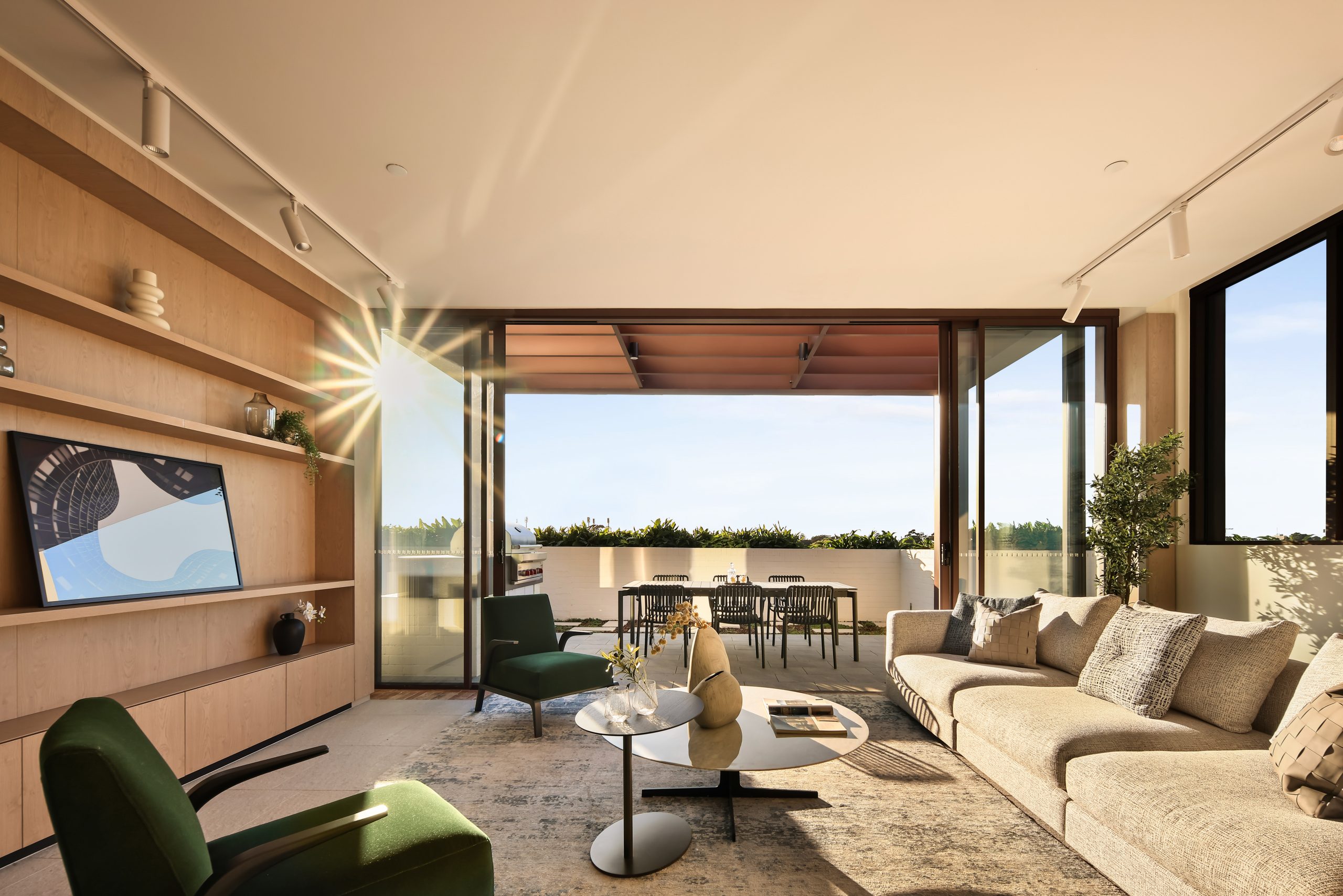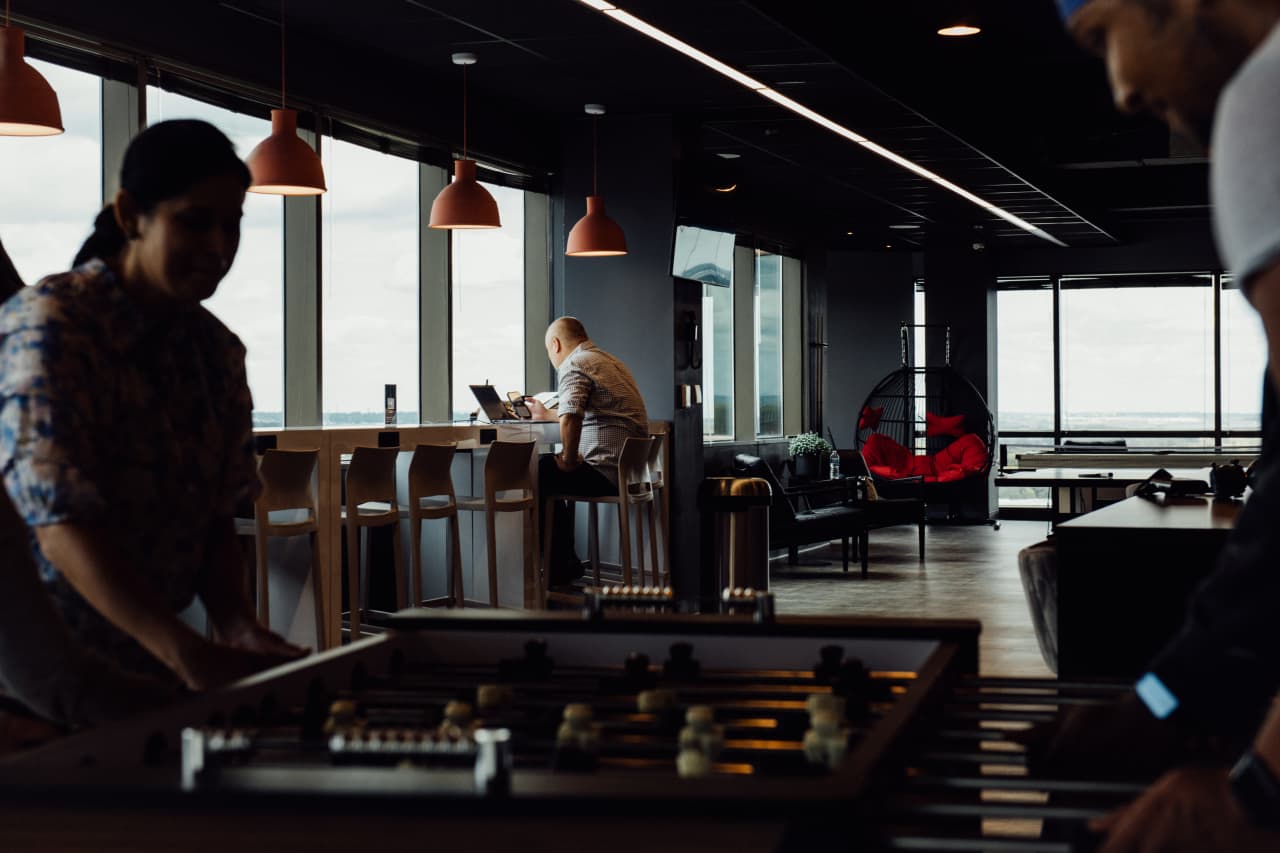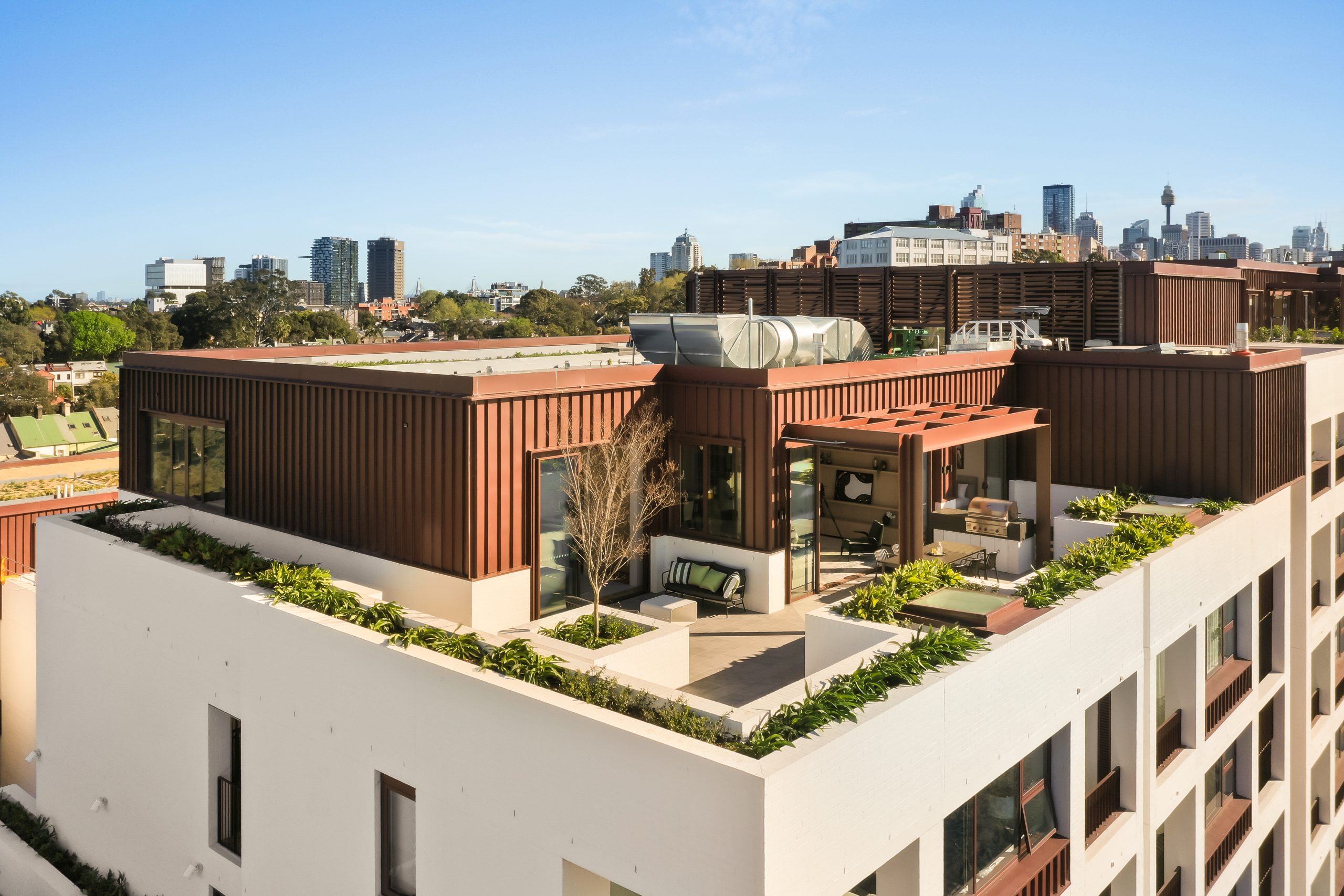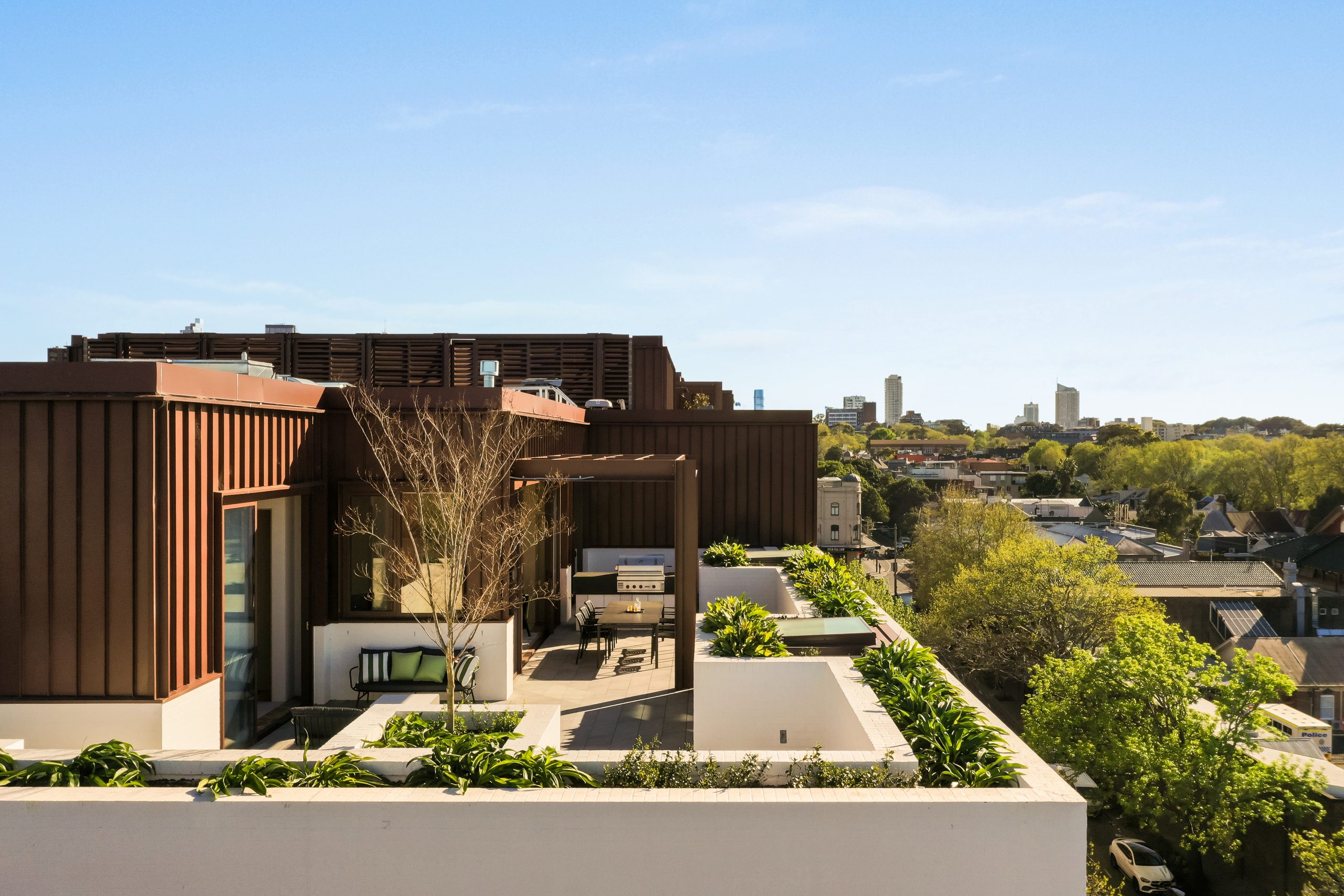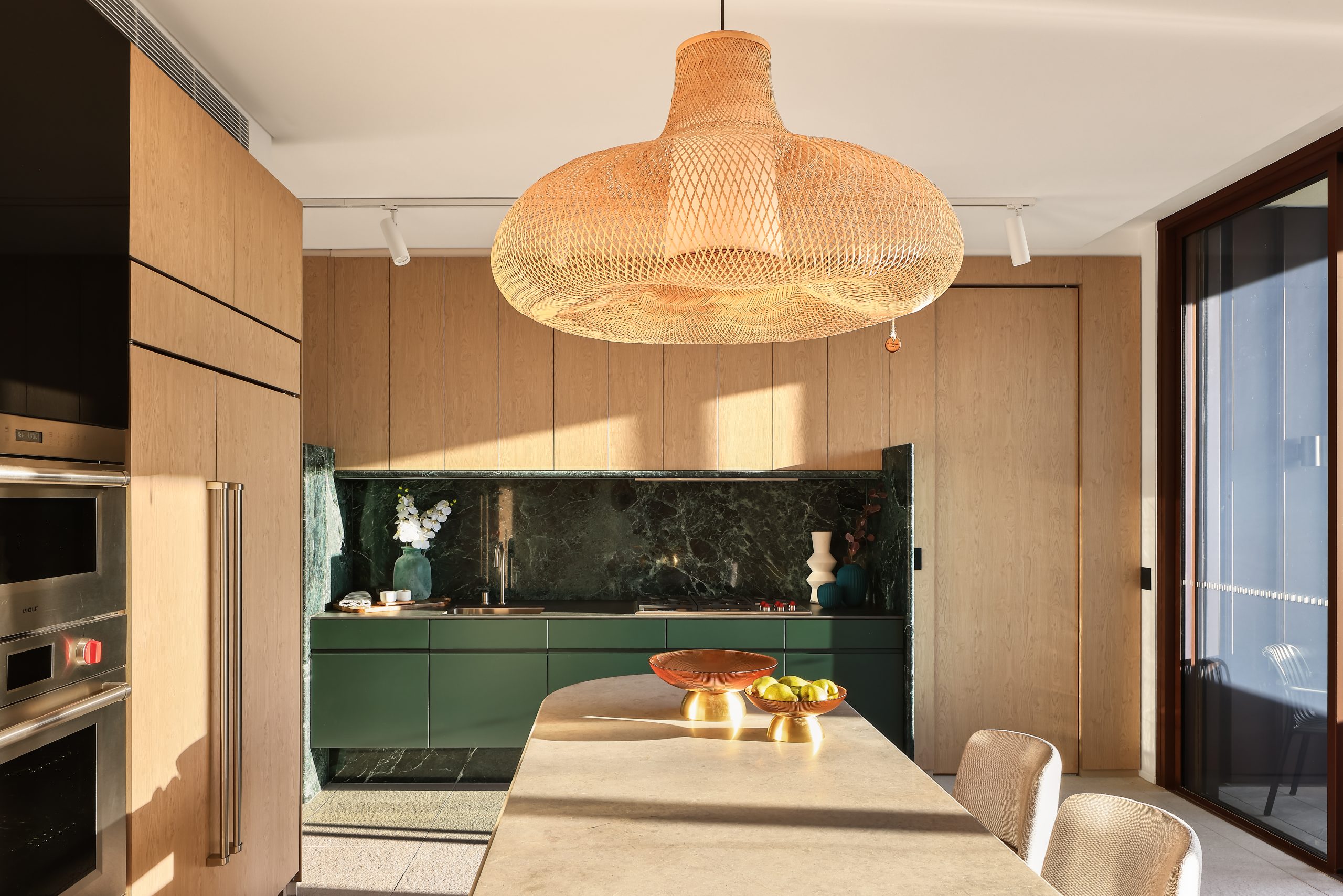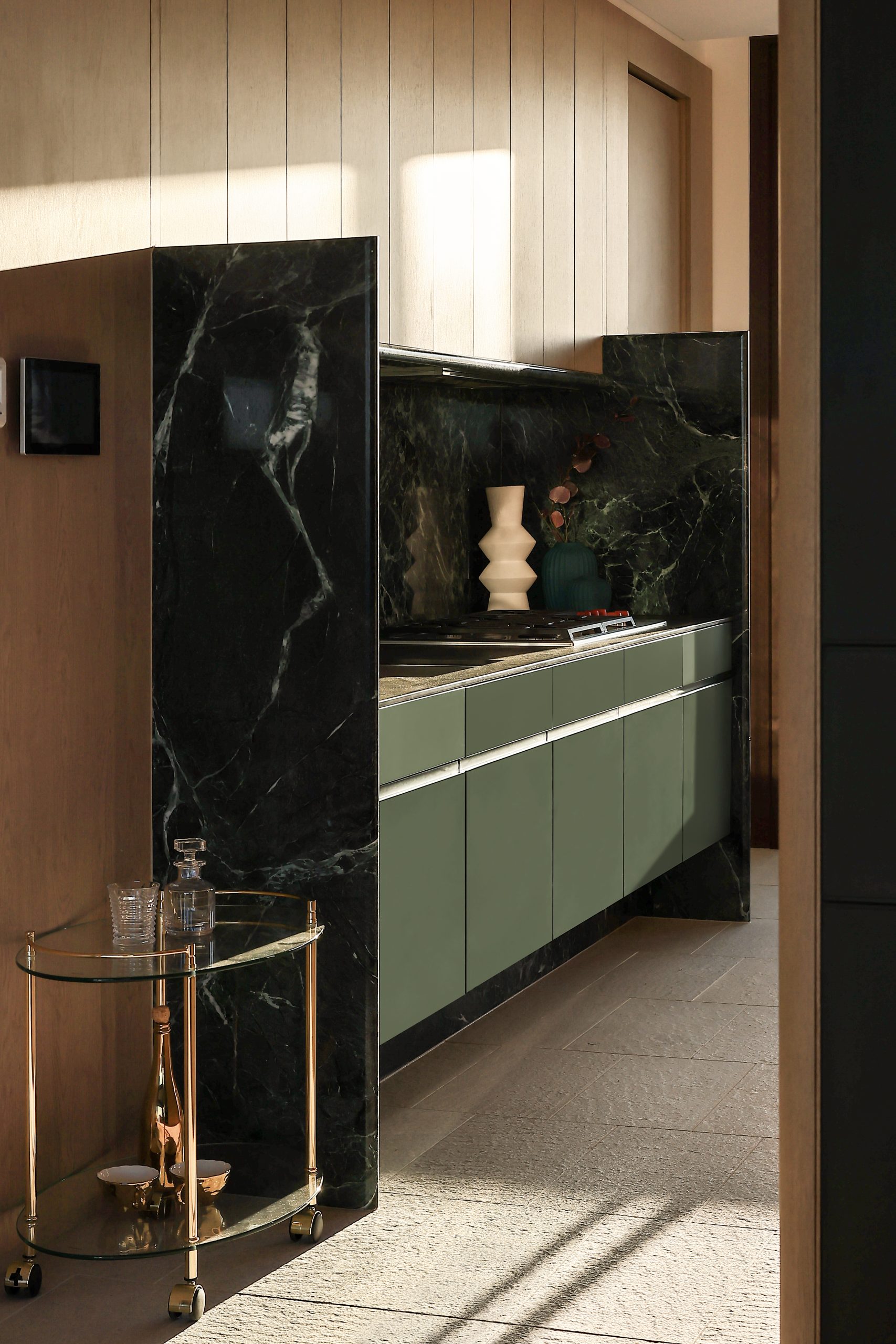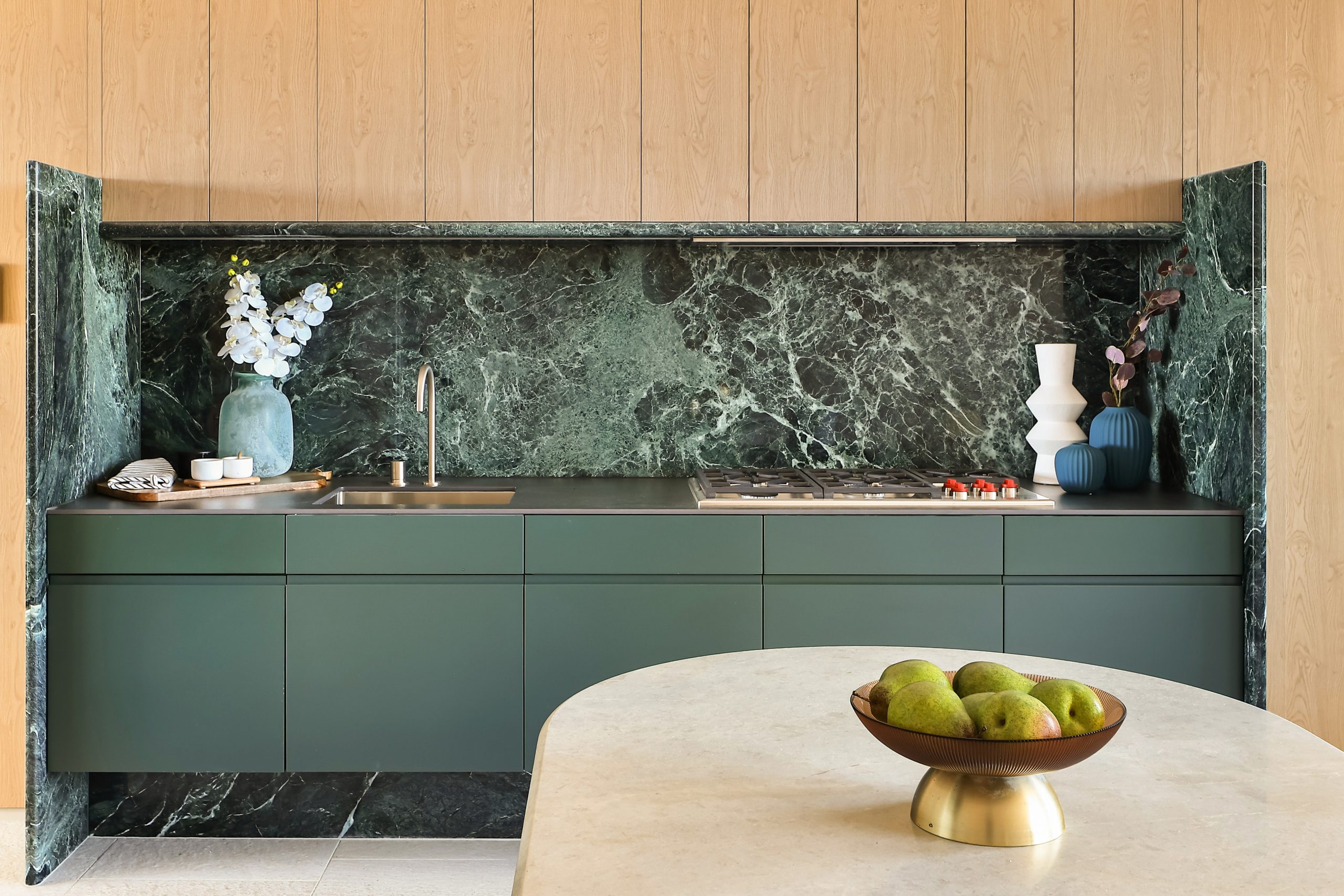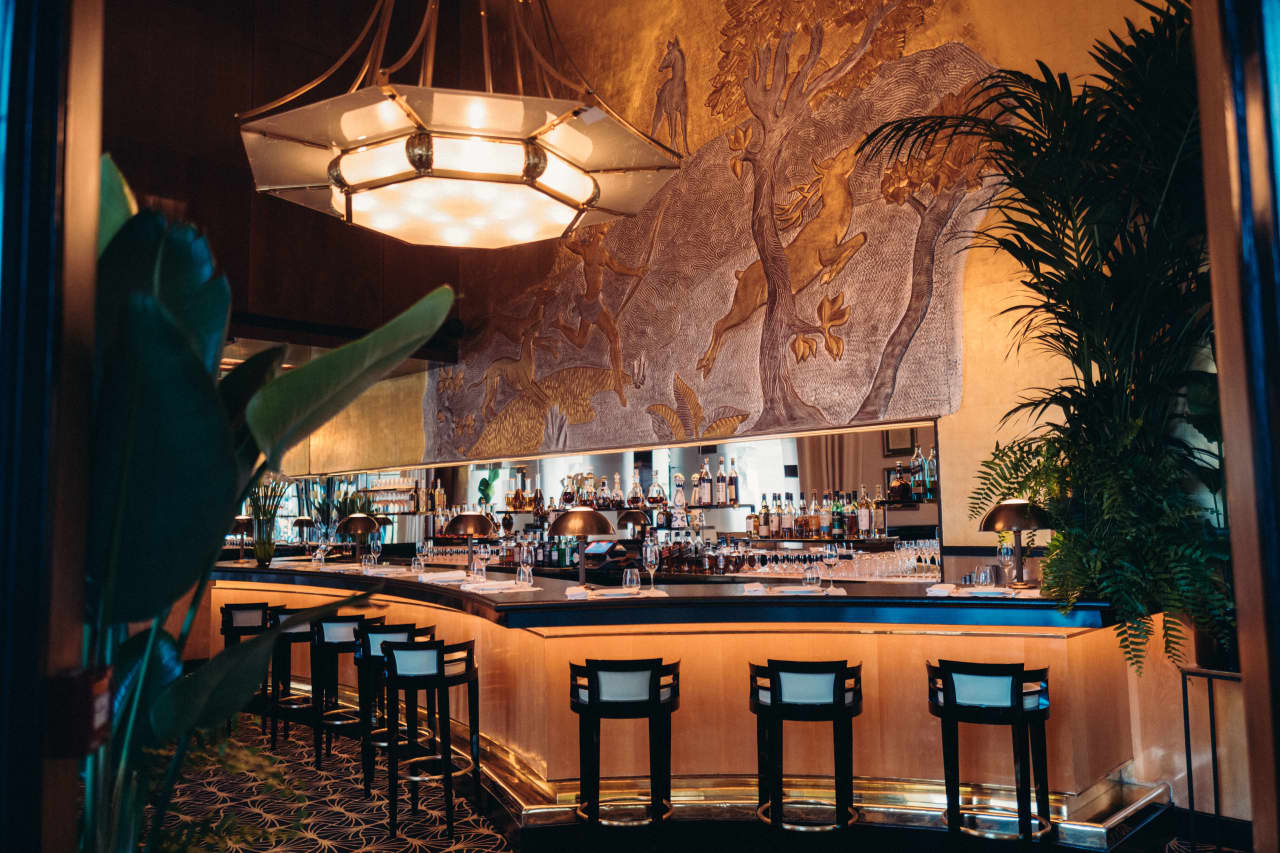The Top 9 Interior Design Trends for 2024
We canvassed hundreds of professionals to predict the next waves in décor.
IMPERFECTIONISTS, REJOICE. Sean Scherer and other professionals in the realm of aesthetics see interior design embracing flaws in 2022. The founder of curiosity shop Kabinett & Kammer, in Franklin, N.Y., cites a surging interest in chipped and crazed ironstone china as an example. “In the past, people wanted pure white and pristine,” he said. Now his customers are hankering for the opposite—a “timeworn and cozy feel.” Sleek, mass-made items and chilly finishes like glass are being ghosted. Instead, people are gravitating toward handmade finishes, plantlike paint colours and friendly architectural curves. “We are dying for warmth, coziness and colouurs that make us feel grounded,” said Los Angeles designer Peti Lau, who observes cool tones’ fading fast. Here, the incoming trends that were highlighted most often by the hundreds of designers we polled—as well as those they believe are bowing out.
While hand-painted floor tiles seemed charming not so long ago, the colourful quadrilaterals won’t be a big part of the finishes arsenal in 2022, predicted Charlotte, N.C., interior designer Gray Walker. “The line between indoors and outdoors will continue blurring,” and such ornamentation is too busy to jibe with the simplicity of the natural world, she said. Mosaic floors, too, had their moment, said Brooklyn-based architect Adam Meshberg, “until people started spending more time at home and opted for serene spaces that were easy on the eyes.”
IN: Wood Laid in Patterns
Classic, ornamental herringbone wood floors are zigzagging into interiors, even contemporary ones. The look “adds a timeless, textural touch in modern rooms,” said Sara Cukerbaum, principal designer at Austin, Texas, firm SLIC Design, who has recently employed herringbone in white oak and ebony-stained oak. Ms. Walker appreciates herringbone’s twofer contribution: “You get the beauty of a pattern and the warmth of wood.”
OUT: Big-Stitch Blankets
Those throws wrought of extremely thick yarn are so commonplace they’ve become aesthetically smothering. “The machine-made, chunky-yarn blankets are more suited for a football stadium than someone’s home,” said Washington, D.C., designer Josh Hildreth, who adds that mass-produced items make a space feel staged rather than lived in.
IN: Well-Woven Wraps
“Hand-loomed blankets are in because of their organic, natural imperfections,” Mr. Hildreth said. “The yarns are typically hand dyed and also have a richness of colour.” And those tossed-on coverlets make an impact. “When you think of a room in layers, the outermost layers are what you see first, creating an immediate impression,” he added. Los Angeles design pro Susan Taylor, of Davis Taylor Design, often reaches for the Scottish lamb’s wool weaves of Paulette Rollo (shown), “because they look more artisan and handmade.”
OUT: Teensy Pendant Lights
Little dangling lights, even multiples of them, in large rooms have lost their lustre for Newport Beach, Calif., designer Raili Clasen. “In spaces with voluminous ceilings, small light fixtures get swallowed up,” she said. Ms. Clasen clusters wee pendants in powder rooms, but in most spaces, fixtures under 36 inches no longer appeal to her. Interior designer Shannon Palmer, in Rancho Mirage, Calif., noted that he still welcomes small pendants made of interestingly blown glass or even rope or raffia, but “clients are leaving the simple, ‘techy’ frosted glass and cable pendants behind.”
IN: Titanic Fixtures
Illumination is no longer a chandelier’s sole reason for being. Designers bring the drama with pieces like the Moooi Random Light II (shown), a fiberglass orb available in diameters up to 41.3 inches. “[Oversized fixtures] become a major art piece and define the personality of the space,” said Ms. Clasen. In the room with which this story begins, Kyiv, Ukraine, architect Serhii Makhno grouped the Khmara ceramic pendants he designed. Besides the direct function of the fixtures, the largest of which is nearly 50 inches across, he said, they create “a wow factor in any interior.”
OUT: Boxy Blackened-Steel Frames
In 2021’s trend report, we confidently sent the modern farmhouse style, with its white clapboard and dark window frames, out to pasture. Its trademark blackened-steel details have nevertheless persisted in many forms of design, but Kim Armstrong, a designer in Rockwall, Texas, predicts their inappropriate application will wane. “In my area of Dallas I see so many people with 1960s-1980s brick homes installing windows with black frames,” she said. “It shouldn’t be used in every renovation or new build on the block.”
IN: Bendy Lines
Arches—in both cabinetry and architecture—are rounding the corner to sate our need for “softer lines and more comforting designs,” said Ms. Armstrong. In the Winnetka, Ill., house shown above, designer Mark Lavender emphasized broad hallway arches, which he said give a “great sense of space,” by adorning the surrounding walls in a strict, contrasting grid of plaid. Even in a comparatively calm and simple interior, arches make a statement, said designer Lindye Galloway, of Costa Mesa, Calif., who recently tucked a vaulted niche into a client’s tiled shower wall.
OUT: The Reign of Cane
Although Ms. Taylor loves the lightness of the handwoven cabinet-fronts occasionally found on vintage furniture, the island-time material “crescendoed during the pandemic by appearing everywhere.” A little goes a long way. Erin Gates, in Wellesley, Mass., still likes a traditional rattan accent piece here and there but finds the boho “all rattan all the time” approach as faded as an old Hawaiian shirt. “It’s also kind of uncomfortable,” she said of caned seating, “and 2022 is all about finding the blend between comfort and fashion.”
IN: Ribs and Flutes
Those professionals designing luxury residences are adding ribbed-wood detailing to walls, kitchen cabinetry, bathrooms and more, said Mr. Meshberg. (File under “and more” the slatted-beechwood credenza above, by Mexican studio Peca, available at 1stdibs.com. ) Also having a revival: similarly linear fluting, a descendant of the vertical grooves that characterized columns in the better homes and gardens of ancient Rome. Today, fluting introduces visual intrigue “without adding true pattern,” said designer Laetitia Laurent, of Laure Nell Interiors in Boca Raton, Fla. It “strikes that balance of simple yet interesting.”
OUT: Routine Mass-Produced Wallpaper
While design experts largely agreed that wallcoverings are still salable, papering rooms with generic “fast fashion” iterations—especially soulless graphic patterns—won’t turn any heads, said designer Kristen Peña, of K Interiors in San Francisco. “Wallpaper isn’t just a substitute for paint anymore,” said Batya Stepelman, a consultant and owner of WallTawk in Denver. “Many people I work with see it as large-format art, and they don’t want the same piece as their neighbour.”
IN: Walls You Want to Touch
Our yen for contact and cocooning has got tactility climbing the walls. Plastered surfaces, like those in the Spanish colonial living room above, which Los Angeles designer Jake Arnold recently revamped, straddles two seemingly opposing aesthetics: Plaster is “very organic, yet rich,” he said. New York designer Lauren Behfarin predicts we’ll see lots of chalky lime wash, with its subtle texture and intrigue. Plaster paint can supply the blotchy optics without the expense of the real trowel-it-on stuff, said Ms. Galloway.
OUT: Made-to-Order Furniture
Supply-chain snarls are causing exasperating delays when it comes to having anything but in-stock merchandise delivered. “Larger furniture pieces in general seem to have the longest lead times,” said San Antonio, Texas, designer Alison Giese, who has encountered 28-week lead times when ordering upholstered sofas and chairs for clients. “I personally ordered some patio chairs last April, and I just received word that the new expected delivery date is March 2022.”
IN: Ye Olde Goodes
“Antiques are available and sold right off the floor,” enthused Sheldon Harte, of interior design firm Harte Brownlee in Laguna Beach, Calif., one of the many design pros we polled who said that shipping woes associated with new furniture have bolstered their appreciation of vintage pieces. Attic finds qualify, too. “Many clients are digging up family heirlooms and opting to use these in interesting ways,” said New York City designer Tina Ramchandani. “People are craving connections and history.” Alessandra Wood, design historian and VP of style at online design firm Modsy, called out early-American examples and their simple forms as particularly resurgent.
OUT: Banal Blues
The calming colour found in dentists’ reception rooms everywhere is “no longer our clients’ go-to,” said Ms. Ramchandani. “Many of my clients have been nervous about using colour and were leaning into blues as their way of adding interest to spaces,” she said of the sometimes melancholy, now overly pervasive colour. Designers are also moving away from blue-based greys and whites.
IN: Mixed Greens
“The one colour our clients are asking for lately is green,” said Betty Brandolino of Fresh Twist Studio in Elmhurst, Ill. Warmer greens like olive won slots in our recent trend reports, but the palette has expanded to include emerald, eucalyptus, jade and teal. “Rich mid-spectrum shades of green bring the outdoors inside,” said Dennese Guadeloupe Rojas, of Interiors by Design in Silver Spring, Md., who singled out colours such as Benjamin Moore’s October Mist [shown above], Valspar’s Garden Flower and Behr’s Sage. How to further intertwine nature and design? “Not just more indoor plants but larger windows and plant-inspired prints,” said New York City designer Laurence Carr.
OUT: Glass Tabletops and Buildings
We don’t usually debate architectural trends in our annual design trend report, but anyone who finds the glass-walled world of HBO’s “Succession” off-putting may be glad to hear from New Yorker David West, founding partner of Hill West Architects. “We have passed the apex of the all-glass facade,” he said. The slick glazing has become “somewhat synonymous with mass production and anonymity.” Same goes indoors, Ms. Taylor said, citing how easily glass can break or become marred. And there’s the smudge factor, as anyone with a gummy-fingered toddler or spouse will lament. “Oy,” she said.
IN: Travertine Tabletops
The sandy limestone plays nicely with other, brighter hues. Using travertine, with its naturally irregular colour patterns, is also like lugging a bit of the countryside indoors, reports interior designer Lauren Lerner, founder of Living with Lolo, in Cave Creek, Ariz. The stone was a midcentury mainstay that popped up again in the 1980s, Ms. Taylor said. “Its comeback now is largely due to its creamy colour, warm feel and organic surface.” In short: It’s back to nature o’clock.
 Copyright 2020, Dow Jones & Company, Inc. All Rights Reserved Worldwide. LEARN MORE
Copyright 2020, Dow Jones & Company, Inc. All Rights Reserved Worldwide. LEARN MORE
This stylish family home combines a classic palette and finishes with a flexible floorplan
Just 55 minutes from Sydney, make this your creative getaway located in the majestic Hawkesbury region.
A Sydney site with a questionable past is reborn as a luxe residential environment ideal for indulging in dining out
Long-term Sydney residents always had handful of not-so-glamourous nicknames for the building on the corner of Cleveland and Baptist Streets straddling Redfern and Surry Hills, but after a modern rebirth that’s all changed.
Once known as “Murder Mall” or “Methadone Mall”, the 1960s-built Surry Hills Shopping Centre was a magnet for colourful characters and questionable behaviour. Today, however, a $500 million facelift of the site — alongside a slow and steady gentrification of the two neighbouring suburbs — the prime corner property has been transformed into a luxury apartment complex Surry Hills Village by developer Toga Group.
The crowning feature of the 122-apartment project is the three-bedroom penthouse, fully completed and just released to market with a $7.5 million price guide.
Measuring 211sqm of internal space, with a 136sqm terrace complete with landscaping, the penthouse is the brand new brainchild of Surry Hills local Adam Haddow, director of architecture at award-winning firm SJB.
Victoria Judge, senior associate and co-interior design lead at SJB says Surry Hills Village sets a new residential benchmark for the southern end of Surry Hills.
“The residential offering is well-appointed, confident, luxe and bohemian. Smart enough to know what makes good living, and cool enough to hold its own amongst design-centric Surry Hills.”
Allan Vidor, managing director of Toga Group, adds that the penthouse is the quintessential jewel in the crown of Surry Hills Village.
“Bringing together a distinct design that draws on the beauty and vibrancy of Sydney; grand spaces and the finest finishes across a significant footprint, located only a stone’s throw away from the exciting cultural hub of Crown St and Surry Hills.”
Created to maximise views of the city skyline and parkland, the top floor apartment has a practical layout including a wide private lobby leading to the main living room, a sleek kitchen featuring Pietra Verde marble and a concealed butler’s pantry Sub-Zero Wolf appliances, full-height Aspen elm joinery panels hiding storage throughout, flamed Saville stone flooring, a powder room, and two car spaces with a personal EV.
All three bedrooms have large wardrobes and ensuites with bathrooms fittings such as freestanding baths, artisan penny tiles, emerald marble surfaces and brushed-nickel accents.
Additional features of the entertainer’s home include leather-bound joinery doors opening to a full wet bar with Sub-Zero wine fridge and Sub-Zero Wolf barbecue.
The Surry Hills Village precinct will open in stages until autumn next year and once complete, Wunderlich Lane will be home to a collection of 25 restaurants and bars plus wellness and boutique retail. The EVE Hotel Sydney will open later in 2024, offering guests an immersive experience in the precinct’s art, culture, and culinary offerings.
The Surry Hills Village penthouse on Baptist is now finished and ready to move into with marketing through Toga Group and inquiries to 1800 554 556.
This stylish family home combines a classic palette and finishes with a flexible floorplan
Just 55 minutes from Sydney, make this your creative getaway located in the majestic Hawkesbury region.
















